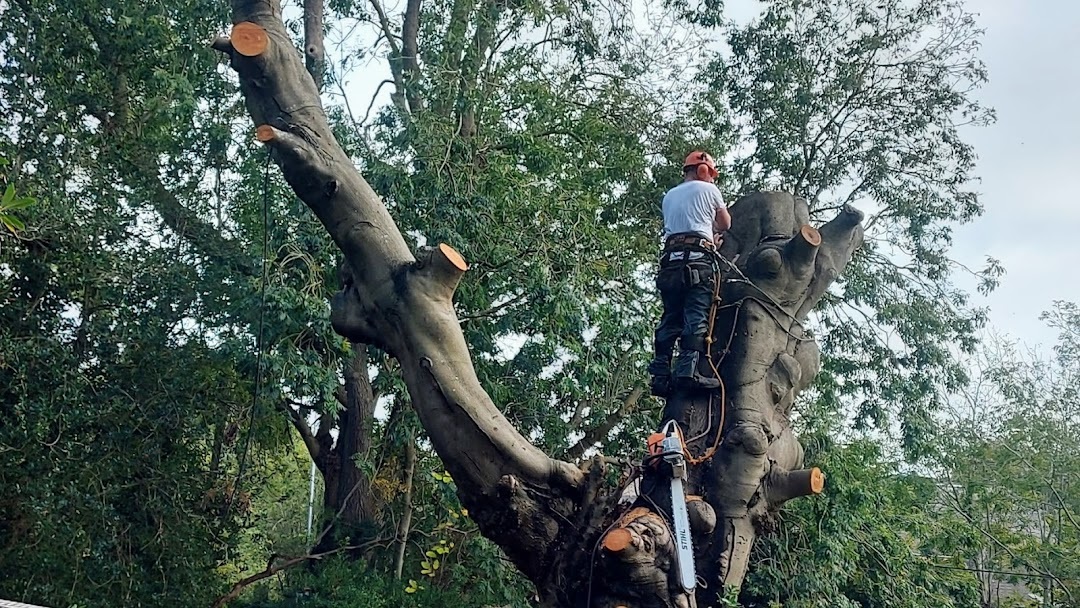Exploring the Art and Science of Tree Pollarding

As urban landscapes undergo a constant transformation, the demand for sustainable and effective tree management practices has never been more crucial. This article takes a deep dive into the captivating realm of tree pollarding—an age-old technique that not only enhances the aesthetics of our surroundings but also plays a pivotal role in maintaining tree health and facilitating urban planning.
Understanding Tree Pollarding
Tree pollarding, a practice dating back to medieval times, entails the removal of upper branches to stimulate a dense head of foliage and branches. The term ‘pollard’ refers to a tree that undergoes this specific pruning technique, showcasing its enduring relevance across various civilizations.
The art of tree pollarding goes beyond mere horticulture; it is an intricate technique demanding precision. Arborists employ diverse methods, including the ‘coppicing’ approach, where trees are cut down to ground level to encourage new growth. Seasonal considerations, with winter being the preferred time for pruning, further underscore the complexity of this practice.
The Art of Tree Pollarding
At the core of this arboricultural art lies the technique itself. Correctly executed, pollarding shapes trees in a way that not only augments visual appeal but also addresses practical concerns. The term ‘Topiary’ is often linked with this art, underscoring the deliberate shaping of trees for ornamental purposes.
Tree pollarding, when carried out with finesse, transforms the urban landscape. Beyond mere aesthetics, it aligns with the needs of urban planning, ensuring controlled growth that avoids interference with power lines or obstructing views—a vital tool in modern arboriculture.
Scientific Aspects of Tree Pollarding
The scientific community recognises the impact of tree pollarding on tree health. Contrary to common misconceptions, when performed correctly, pollarding can enhance a tree’s overall well-being. Removal of older branches redirects the tree’s energy towards new growth, resulting in a more robust and healthier structure.
Environmental effects are another critical consideration. Pollarded trees exhibit enhanced resilience to environmental stressors, such as strong winds and heavy snowfall. The controlled growth also diminishes the risk of falling branches, making pollarding a safer option for urban areas.
Tree Species Suitable for Pollarding
Certain tree species prove more suitable for pollarding. Popular choices encompass willows, poplars, and specific fruit trees. The decision on which species to pollard hinges on various factors, including the tree’s natural growth habits and the specific goals of the pruning.
Selection criteria extend from achieving the desired aesthetic outcome to adapting to the environmental conditions of the area. Understanding the characteristics of different species is imperative to achieve desired results without compromising the tree’s health.
Urban Landscape and Tree Pollarding
As cities expand and green spaces dwindle, tree pollarding emerges as a valuable tool in urban landscape management. Controlled growth ensures trees coexist harmoniously with the built environment, averting potential hazards and preserving a pleasing aesthetic.
Aesthetics and urban planning go hand in hand. Well-pollarded trees contribute to a visually appealing cityscape while satisfying practical needs. This delicate balance is indispensable for creating sustainable and livable urban spaces.
Common Misconceptions about Tree Pollarding
Despite its historical significance, tree pollarding is often enveloped in misconceptions. Addressing these myths is vital for fostering a better understanding of this pruning technique. A prevalent misconception is that pollarding harms the tree, but in reality, when executed by trained professionals, it enhances the tree’s health and longevity.
Dispelling misinformation is an ongoing process. Public awareness and education play a pivotal role in promoting responsible tree care practices. As more people grasp the benefits of tree pollarding, it becomes a tool not just for arborists but for the community at large.
The Future of Tree Pollarding
Looking ahead, sustainable practices in tree pollarding gain prominence. Modern arboriculture places a strong emphasis on eco-friendly approaches benefiting both trees and the environment. The future of tree pollarding rests in the hands of advocates championing these sustainable practices.
From leveraging technology to improve pruning techniques to integrating pollarding into broader ecological initiatives, the future promises exciting developments. As urban areas grapple with the challenges of balancing green spaces with infrastructure, tree pollarding emerges as a beacon of hope for creating thriving, sustainable cities










